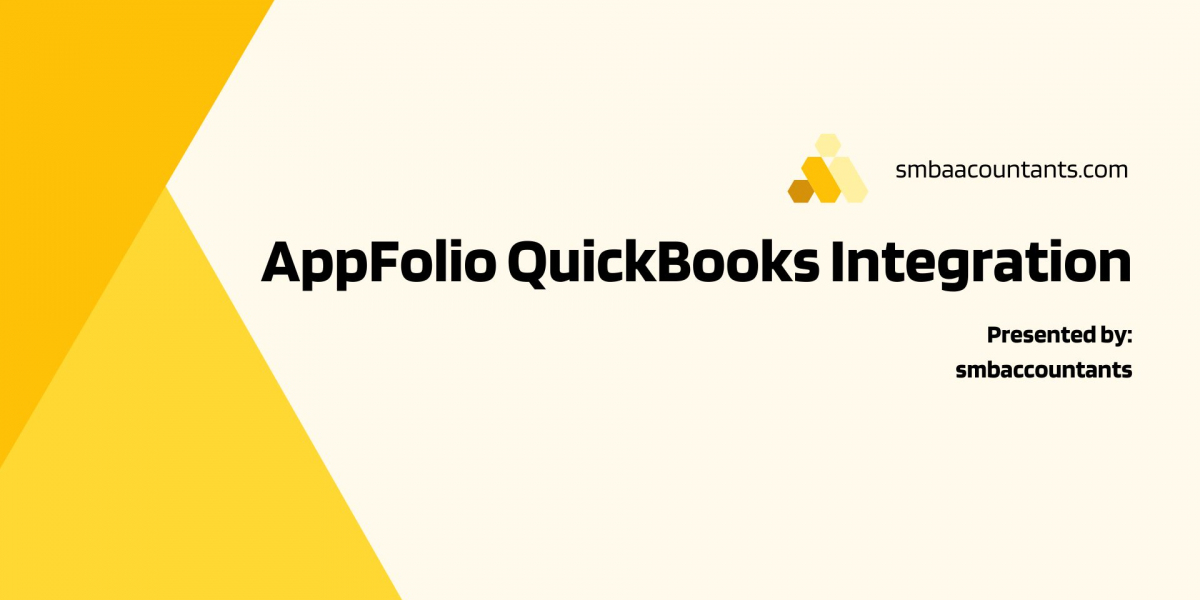In today's fast-paced and competitive business world, efficiency, and organization are crucial for the success of any company. This is especially true in the property management industry, where managing multiple properties and tenants can be a complex and time-consuming task. That's where Appfolio QuickBooks integration comes into play.
Appfolio is a cloud-based property management software that offers a comprehensive suite of tools for landlords, property managers, and real estate investors to streamline their operations. On the other hand, QuickBooks is a popular accounting software used by businesses of all sizes to manage finances and keep track of financial transactions.
By integrating these two powerful systems, property management businesses can greatly benefit from improved efficiency, accuracy, and organization in their everyday tasks. Let's explore some key reasons why Appfolio QuickBooks integration is essential for property management businesses.
1) Streamlined Data Entry:
One of the biggest advantages of integrating Appfolio with QuickBooks is streamlined data entry. With this integration, all your financial data from Appfolio will automatically sync with your QuickBooks account. This eliminates the need for manual data entry or exporting/importing data between different systems, saving you time and reducing the risk of errors.
2) Accurate Financial Reporting:
Financial reporting plays a crucial role in managing any business successfully. However, generating accurate reports can be challenging when using separate systems like Appfolio and QuickBooks. By integrating these two platforms, you can ensure that all your financial data is consistent across both systems, resulting in more accurate financial reports.
3) Time-Saving:
As mentioned earlier, manual data entry between different systems can be time-consuming and prone to human error. By automating this process through integration, you free up valuable time that you can use to focus on other important aspects of your business.
4) Better Cash Flow Management:
With Appfolio QuickBooks integration, rent payments and other financial transactions are automatically recorded in QuickBooks. This provides property managers with real-time insights into their cash flow, allowing them to make better-informed decisions for their business.
5) Improved Tenant Experience:
Another significant advantage of Appfolio QuickBooks integration is improved tenant experience. By automating rent payments and providing online portals for tenants to manage their accounts, this integration offers a seamless and hassle-free experience for renters.
Integrating Appfolio with QuickBooks is crucial for property management businesses looking to streamline their operations, improve efficiency, and enhance the overall tenant experience. With all these benefits in mind, it's evident that Appfolio QuickBooks integration is an essential tool for the success of any property management business.
Understanding Appfolio and QuickBooks:
Appfolio and QuickBooks are two powerful software solutions that can help streamline your property management business. While they both serve different purposes, integrating them can greatly enhance your operations and save you time and money.
Appfolio is a comprehensive cloud-based property management platform that offers a wide range of features and tools to assist property managers in managing their portfolios efficiently. It provides solutions for everything from accounting and budgeting to tenant screenings and maintenance requests. With its user-friendly interface and mobile accessibility, Appfolio makes it easy for property managers to stay on top of their tasks while on the go.
What is Appfolio?
Appfolio is a cloud-based property management software designed to streamline the operations of real estate and rental businesses. It offers a comprehensive suite of tools for managing properties, tenants, accounting, marketing, and more. With its user-friendly interface and powerful features, Appfolio has become one of the leading property management solutions in the market.
One of the key features of Appfolio is its QuickBooks integration. This means that all financial data from Appfolio can be seamlessly synced with QuickBooks, eliminating the need for manual data entry and reducing the chances of human error. This integration allows property managers to have up-to-date and accurate financial information at their fingertips.
What is QuickBooks?
QuickBooks is a popular accounting software that has been around since the early 1980s. It was created by Intuit and has become one of the leading financial management tools for small businesses, including property management companies. QuickBooks offers a wide range of features to help streamline various financial processes, such as bookkeeping, invoicing, bill payments, tax preparation, and budget planning.
One of the main benefits of using QuickBooks for your property management business is its user-friendly interface and ease of use. Even if you don't have an accounting background, you can easily navigate through the software and manage your finances with minimal training. Plus, QuickBooks provides helpful tutorials and customer support to guide you through any challenges or questions you may have.
Benefits of Integrating Appfolio and QuickBooks
Integrating Appfolio and QuickBooks can bring numerous benefits to your property management business. In today's fast-paced environment, it is essential to streamline your operations and improve efficiency wherever possible. The integration of these two powerful software programs can help you achieve just that.
One of the main benefits of integrating Appfolio and QuickBooks is the elimination of manual data entry. With traditional methods, property managers often have to manually enter data from one system to another, which is not only time-consuming but also prone to human error. By integrating these two systems, information such as tenant payments, expenses, and invoices are automatically synced between them in real time. This eliminates the need for duplicate entries, saving you time and reducing the risk of errors.
Step-by-Step Guide to Appfolio QuickBooks Integration:
Integrating Appfolio with QuickBooks can greatly streamline your property management business by automating financial transactions and eliminating the need for manual data entry. In this step-by-step guide, we will walk you through the process of integrating these two powerful tools.
Step 1: Prepare Your Data
Before you begin the integration process, it is important to ensure that your data in both Appfolio and QuickBooks is accurate and up-to-date. This includes all tenant information, rent payments, expenses, and invoices. It may be helpful to run a report in both systems to compare the data and make any necessary adjustments.
Step 2: Choose an Integration Tool
Appfolio offers three different options for integrating with QuickBooks: Sync with Accounting Software (SAS), Web Connector, and IIF Importer. Each option has its advantages and limitations, so it is important to research which one would best suit your business needs.
Sync with Accounting Software (SAS) is a cloud-based integration tool that allows for real-time synchronization between Appfolio and QuickBooks. It automatically updates financial data every few hours, making it ideal for businesses that require frequent updates.
Web Connector is a desktop application that allows for batch syncing between Appfolio and QuickBooks. This option requires manual initiation of syncs but can handle larger amounts of data at once.
IIF Importer is another desktop application that allows you to import a file from Appfolio into QuickBooks. This option may be more suitable for smaller businesses or those who prefer a more hands-on approach.
Step 3: Set Up a Chart of Accounts
The chart of accounts in QuickBooks should reflect your property management business structure as well as the categories used in Appfolio. You can either set up new accounts manually or use an existing template provided by either SAS or Web Connector.
Step 4: Configure the Integration Tool
Using the integration tool of your choice, you will need to enter your Appfolio and QuickBooks login information and map the accounts in both systems. This step may require some trial and error as you fine-tune the mapping to ensure that all data is transferred accurately.
Step 5: Test and Troubleshoot
After configuring the integration tool, it is important to test the integration by entering a few transactions in Appfolio and syncing them with QuickBooks. This will allow you to identify any potential issues that may arise and troubleshoot them before fully implementing the integration.
Integrating Appfolio with QuickBooks can greatly improve efficiency in your property management business. By following this step-by-step guide, you can seamlessly connect these two platforms and streamline your financial processes.








